What communicative force lies behind the deliberate disfiguration of a photograph? What discourse would otherwise remain mute in original form, were it not liberated through ruin? Brazilian artist and architect Lucas Simões explores topographic aesthetics in fragmented portraiture through his papercut series desretratos (“unportraits”) .
Overwhelming the voices of intimate friends as they narrated their suppressed secrets, music subtly informed the ambiance of Simões’ imagery, but the most significant power of influence was the character of each portrayed individual. Simões slices the temporality of scenes in a person’s life, solidifying within one image a progression of time and its evolving lyricism. Within the physical evidence of a single instance, Simões nonetheless relates a series of intensely personal moments. His experiments allude to the inherent capacity of deconstruction as a medium for transcendent visualization.
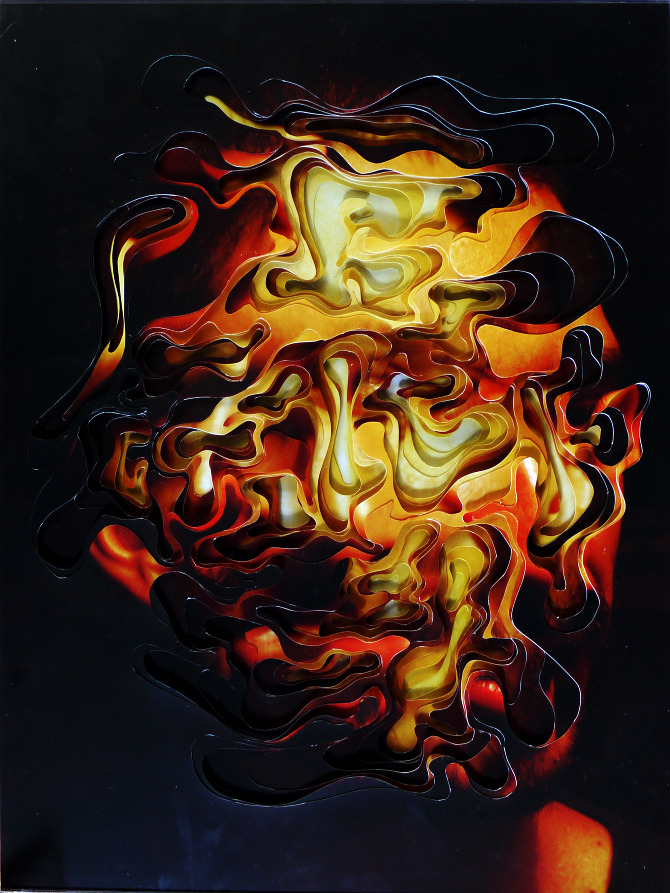
Elements of familiarity — the curling of a rogue nostril, the glimmer of an irregular tooth, a pupil preserved — reveal themselves in an otherwise unidentifiable mass of un-face. Adding an intimacy to the dynamics of photographic process, the relationships between Simões and his friends provide yet another palette of interpretations to a multidimensional portraiture.
“A nice relationship is when it’s full of will to know the other, knowing that you will never discover enough of the other,” reflects Simões. “A good relationship keeps its mystery and that is what these portraits represent: mysteries.”
Simões’ characterizations embody the anecdotal construction of identity. Expressed are the fragmentary encounters that allow us to build our own narratives as well as those we assume for others. While Simões communicates by using only a single theme from each portrait’s subject, they are the same disjointed narratives which pervade our collective communications.
Our encounters are built upon never-ending interludes; selected words are borne with the yearning for potency to make necessary impressions. Speaking is a surrender of the intricacies of self and experience into the fragile constructions of syllables. We consider knowledge of each other in patchwork textures, out of which we create innumerably layered interpretations of one another.
“For me,” Simões says, “it is to question the possibility of representing a person — a lifetime — in a portrait. What I represent is the impossibility of it.”
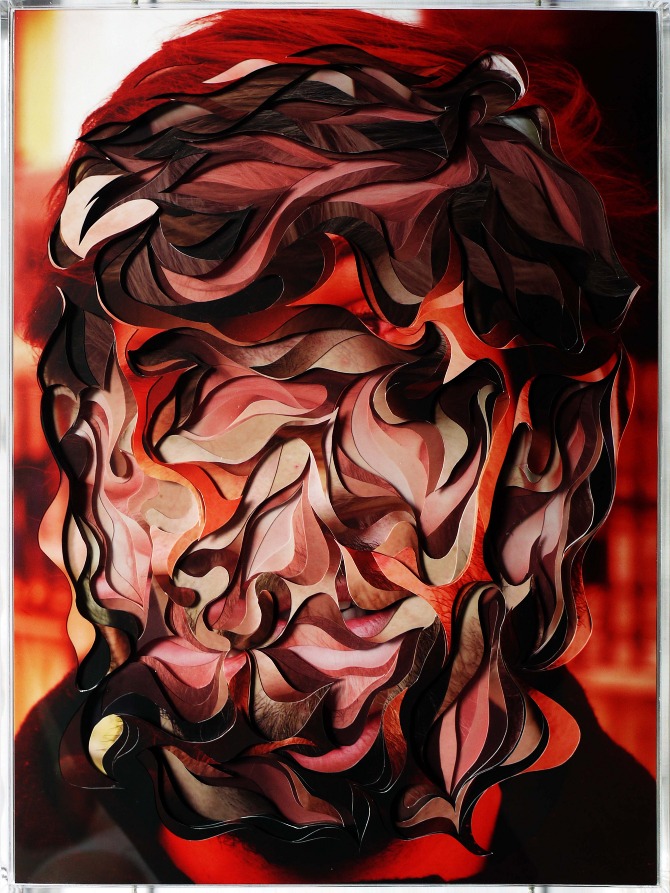
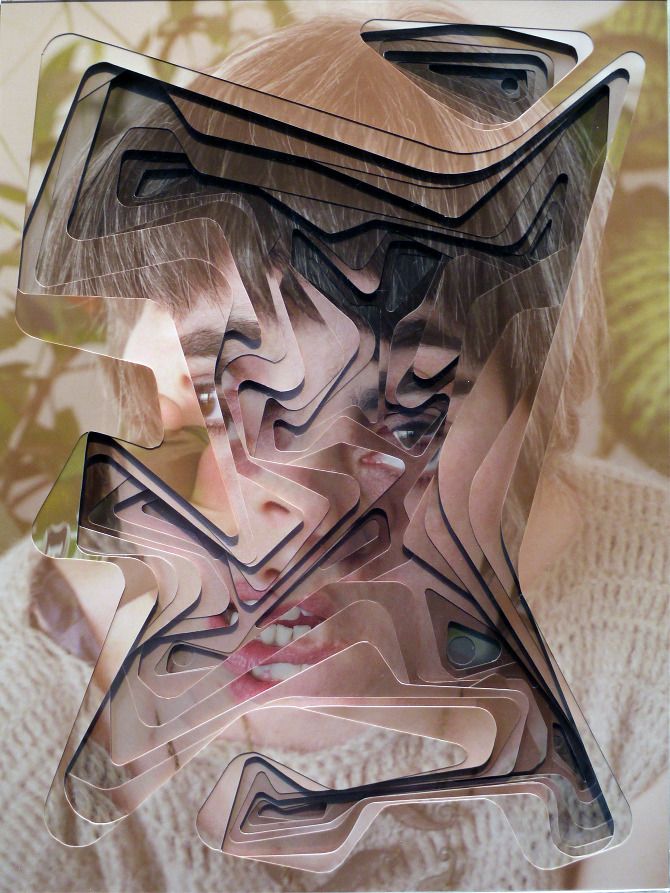
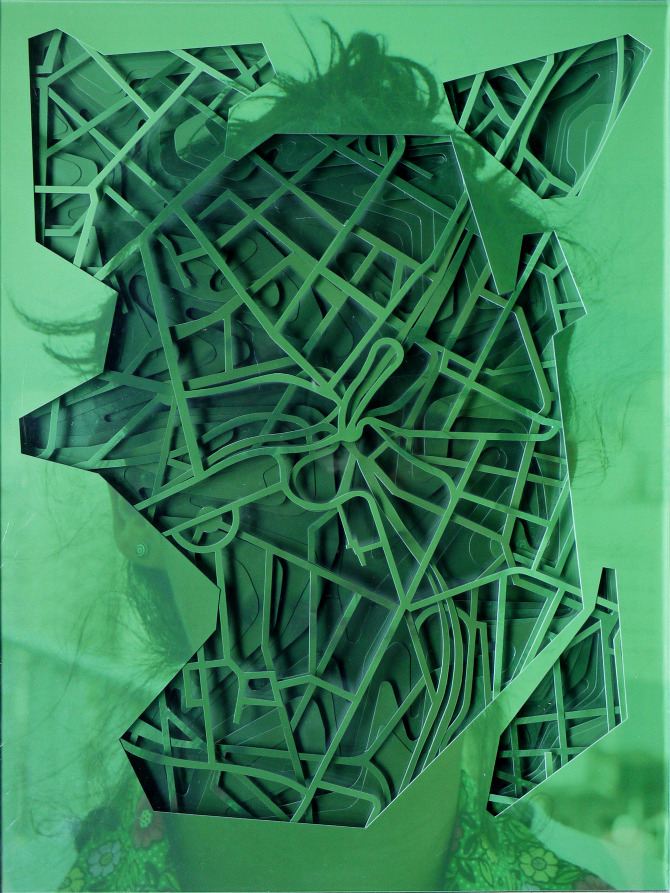
It is the transience of time that moves the vision of Lucas Simões. A photograph crystallizes instance — but how does one contain the spoken essence of a person’s life within a single image? How is it possible to express an emotionally-informed temporality without explicitly relying on identifiable features?
Lucas Simões experiments with a simple aesthetic, but one which passionately engages with his medium of photography in a way that does limit narrative within a singular dimension. By abstracting identity, geometric shapes make their subjects seem bizarrely familiar. It is neither the spider silk of wrinkles or the tender slope of a brow that invokes visceral response, but the unidentified human as a fertile symbol. We viewers relate to them not as particulars — not as specific people — but as universals.
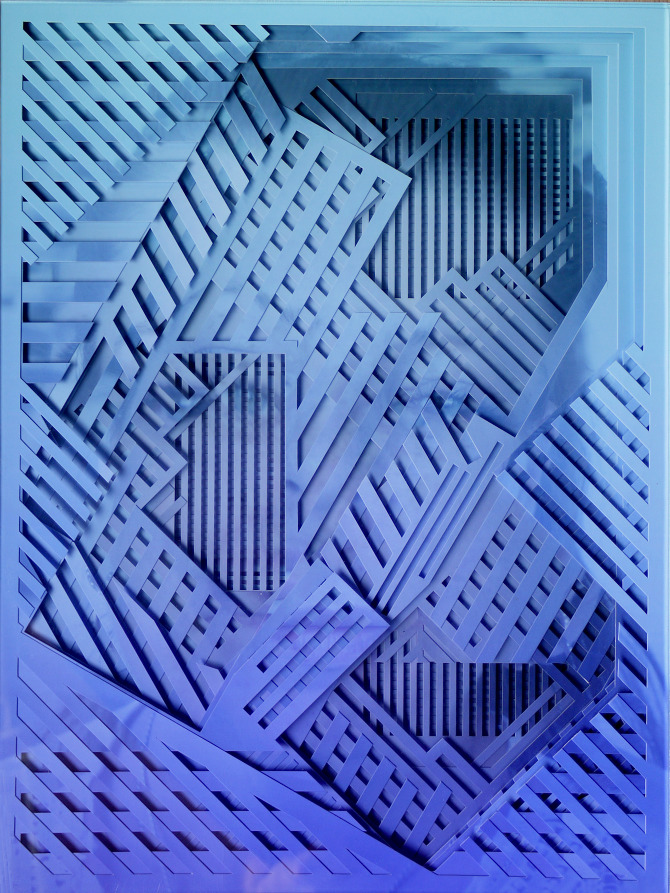

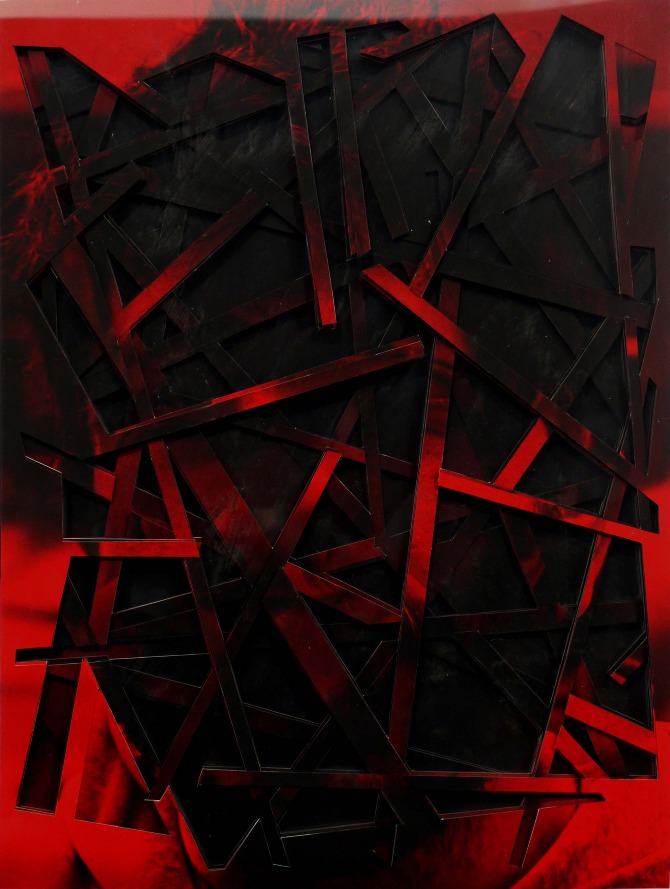
Lucas Simões Photographer Interview
Your series desretratos captures your intimate friends as they confessed secrets to you, and also bears the influence of music that they chose for you while you photographed them. How would you describe some of the emotions that were conveyed, and how would you say they are specifically represented in some of your images?
The experience of this portrait shooting session is the one of being present in a really intimate moment. When someone reveals a secret for himself — once I’m not listening to the secret — this moment of putting an unsaid event into work makes them act in a really personal way, sometimes out of shyness, seriousness or happiness. I’m present there, making the photos, but the music in my headphones takes the reality out of it; I’m just watching this moment, and the music I’m listening is the only clue I have from that secret.
So, each experience is different from another; everything influences the final work: the place that is chosen to make it happen, the mood of the day. I usually get the emotions of the person chosen to photograph, so if someone is feeling uncomfortable with that, I feel uncomfortable too…
Some of your images depict your friends with a topographic quality, showing faces like maps of terrain. Was this an intentional parallel?
Since I’m an architect, often seen in my works is an architectural way of thinking. In the desretratos series… it is intentional, the way of making it as a topography, because that’s what a secret can be made of — many layers of reasons, actions, facts, feelings that overlay and mix each other, and are hardly seen completely from a single point of view.
Color is another powerful element of the series. In what ways were you influenced in your choices of color, and is there any specific symbolism behind certain colors used in the series?
Right after finishing the shooting session I asked each person if his secret had any color. These are the colors that the portrait carries; and not all of them said it had a color, so I kept the image as it was taken. I can’t say why they chose those colors; it’s part of the secret.
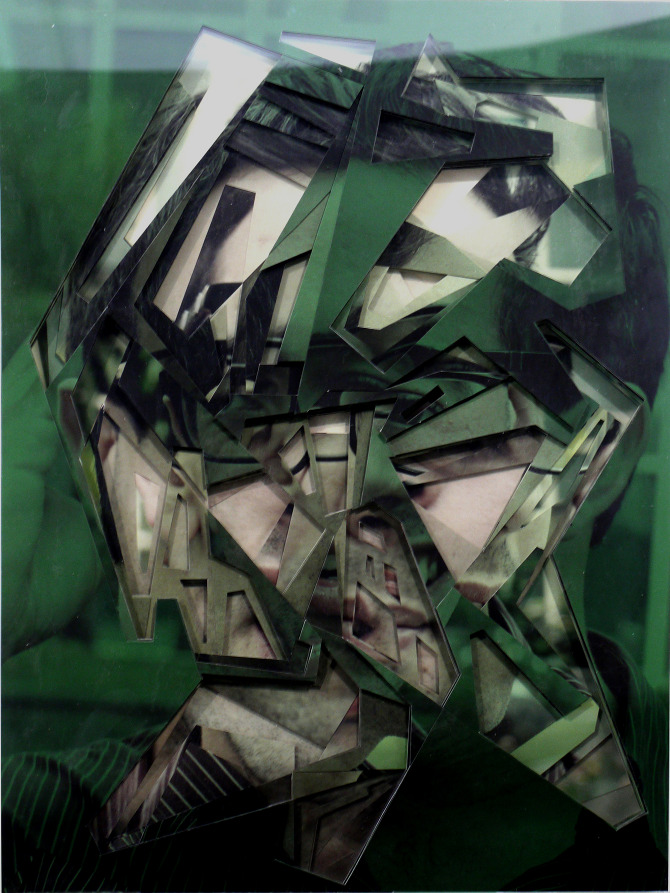

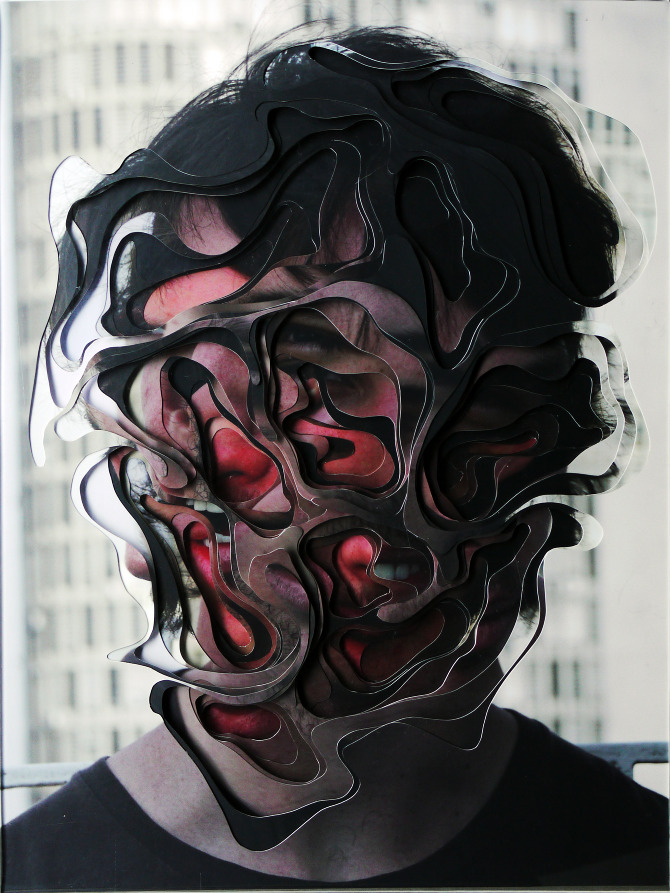
Ω

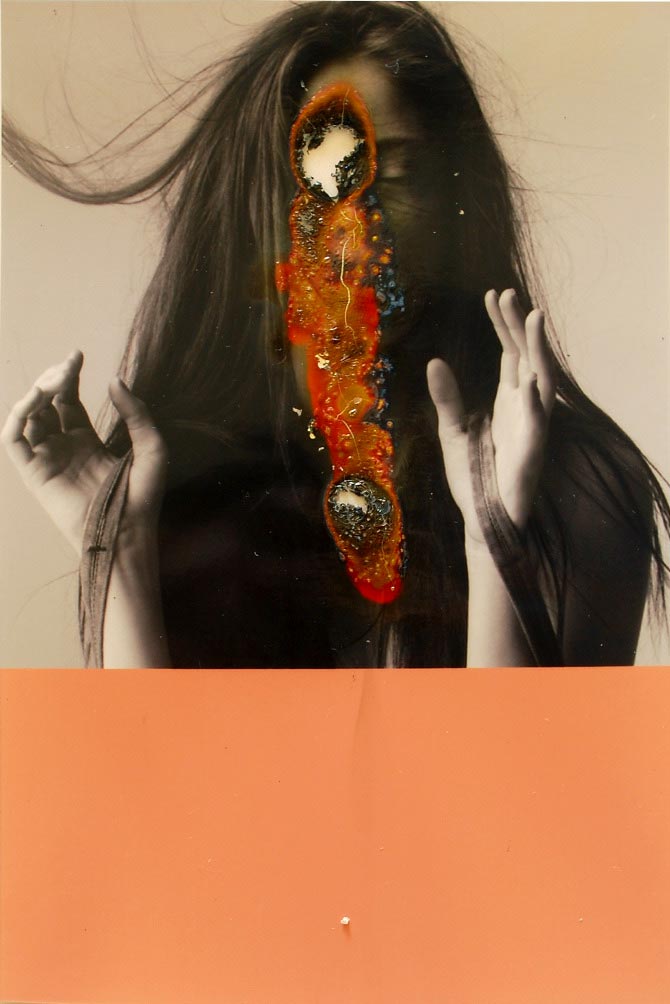
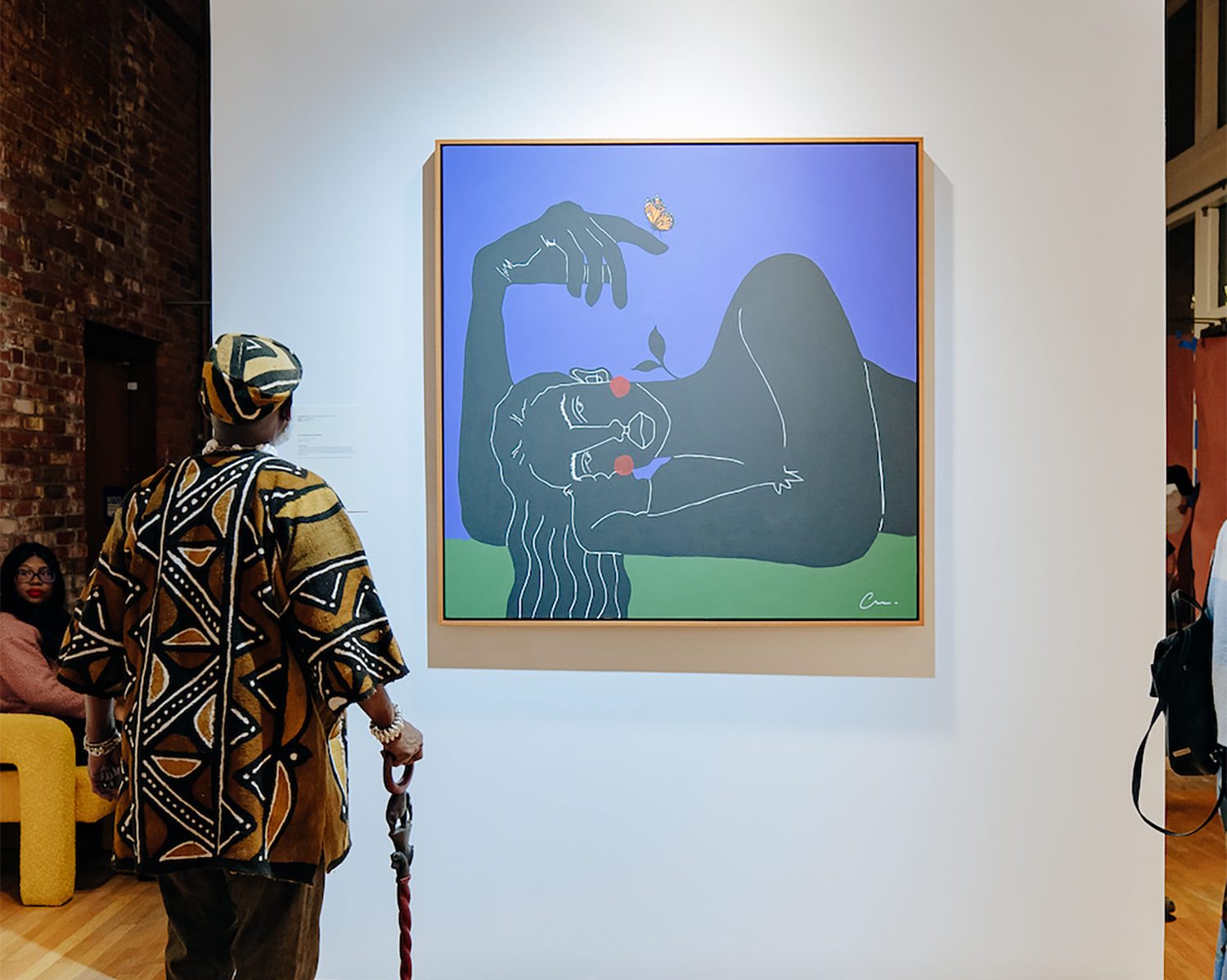




[…] Lucas Simões Photographer Interview – Desretratos: Communicating Transience and Character through Deconstructed Portraiture: http://www.redefinemag.com/2013/lucas-simoes-photographer-interview-desretratos-series/ […]
[…] ◊ Link ◊ […]
[…] being said about him: In an interview with Redefine Magazine about his papercut series desretratos (“unportraits”), reporter Lital […]
[…] http://www.redefinemag.com/2013/lucas-simoes-photographer-interview-desretratos-series/ […]